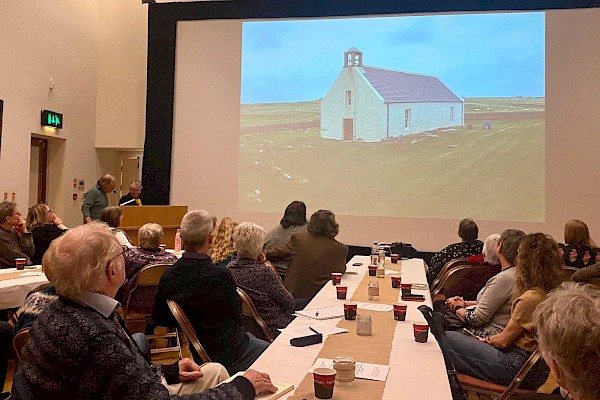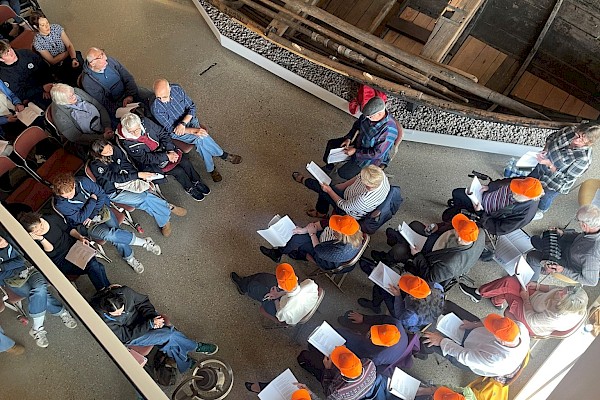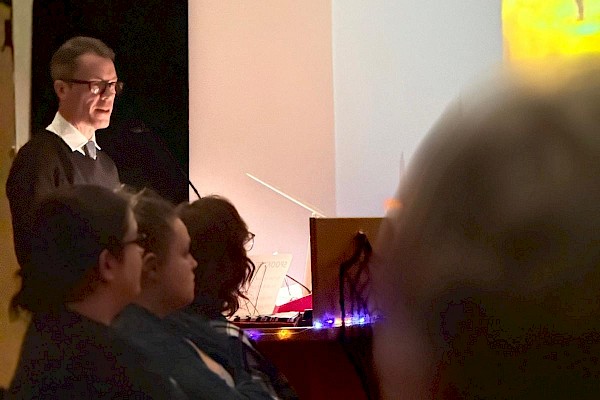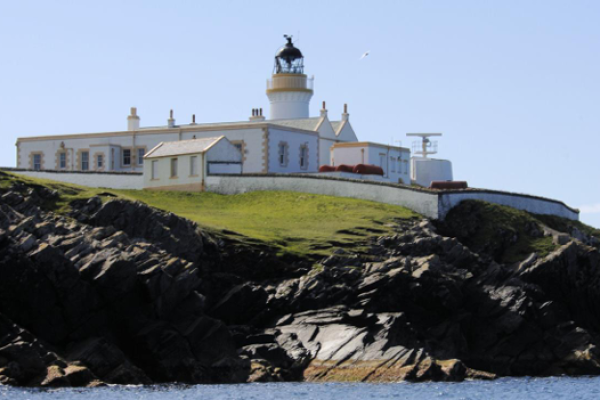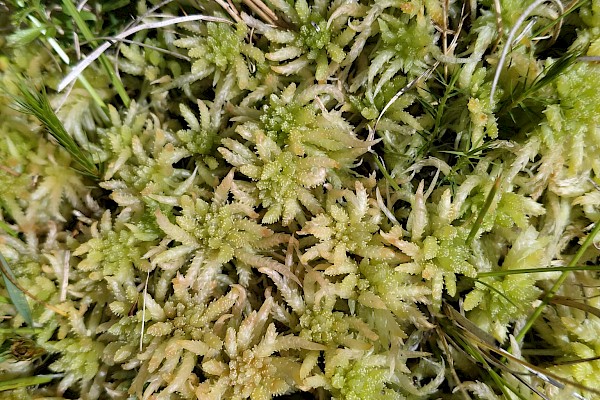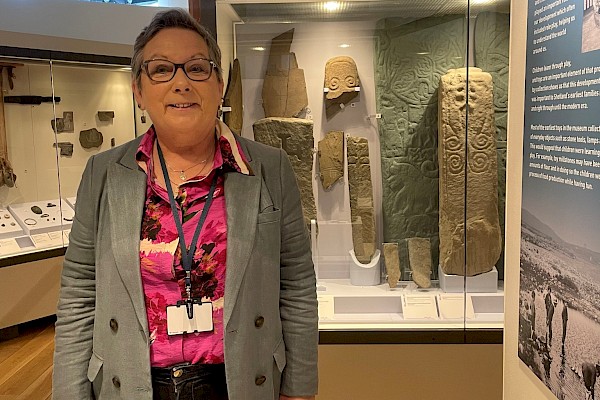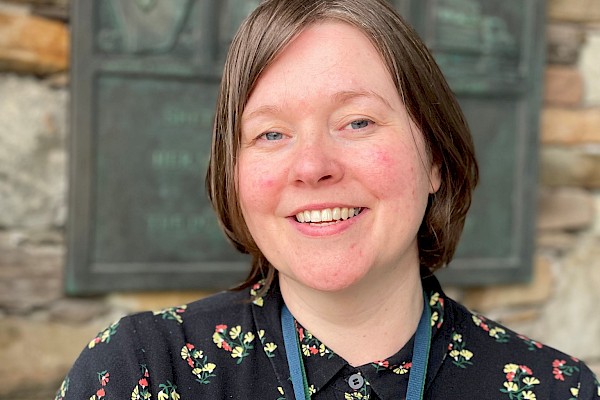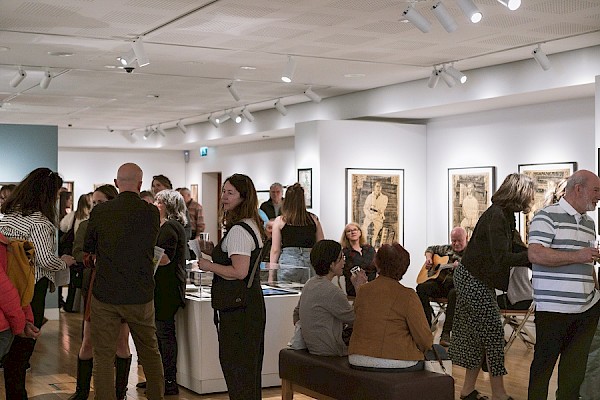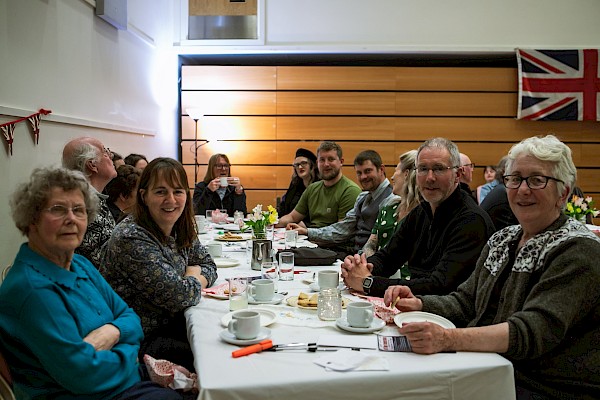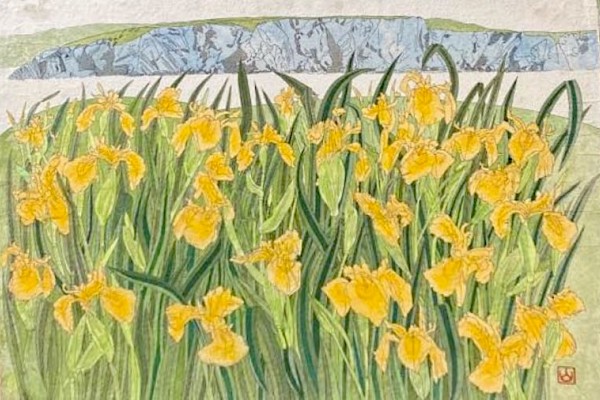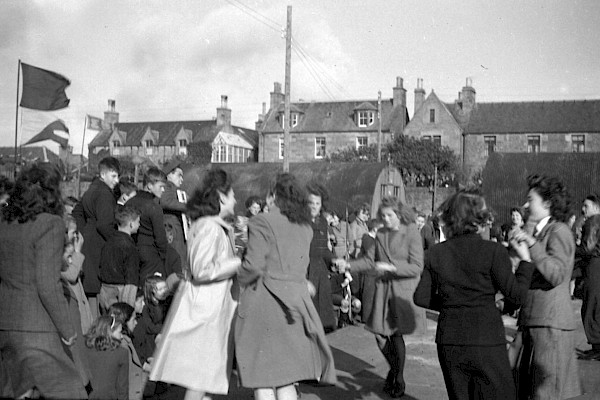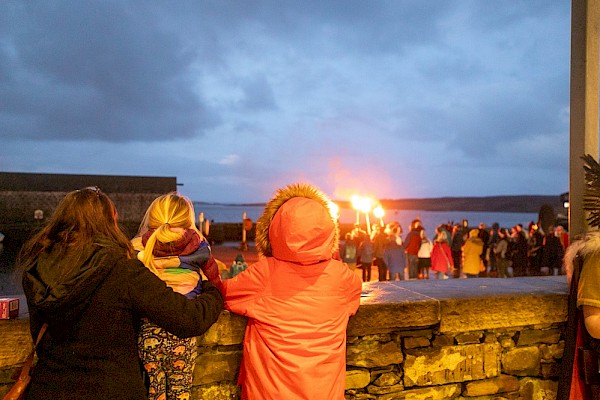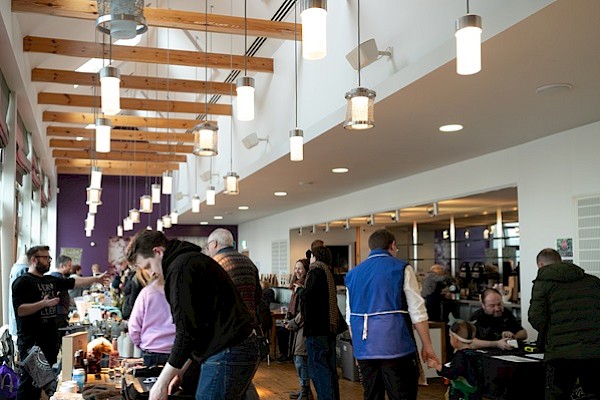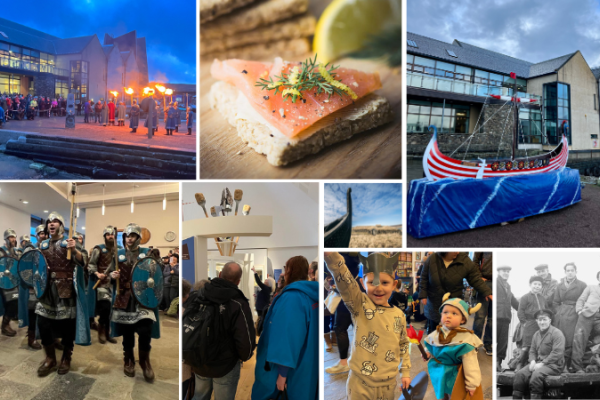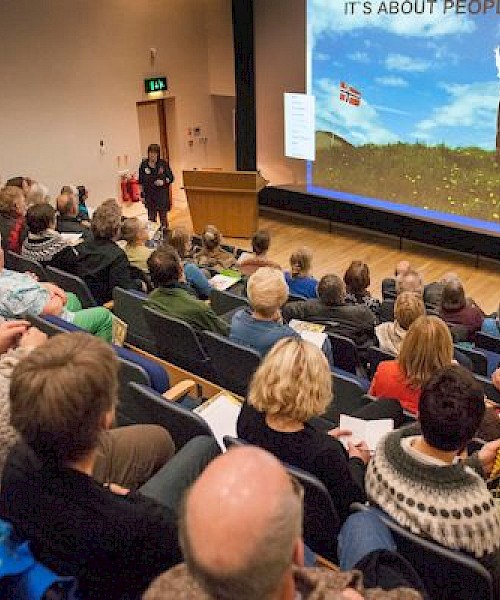Shetland's jubilations (Part 1)
2022 is the third time in twenty years there’s been a Royal Jubilee, so a body might think they come around often. In fact, it’s in the nature of them that they’re quite rare. Anyone in their fifties has witnessed only four in a lifetime, and there’s unlikely to be another during their span, and you’d need to be in your nineties to remember another. This year’s Jubilee – commemorating a monarch’s 70 years – is unique, and it’s an opportunity to investigate how Shetlanders have celebrated Jubilees in the past.
The idea of a Royal Jubilee has been around for two centuries. George III had ascended the throne young, so achieved the rare distinction of fifty years as monarch, and the authorities made a special celebration of it - rather eccentrically in 1809, his 49th year as king - with the rationale being the year’s commemoration would end with him entering year 50. It was long after that another such event reoccurred, when Victoria reached her fiftieth year as Queen in 1887. She even reached 60 years on the throne, so the new concept of a Diamond Jubilee came to be, in 1897. Since then, Jubilees have come to mark 25 and 50 years, and every tenth one thereafter; silver, golden, diamond, platinum. People celebrated George V’s Silver Jubilee in 1935, and our own Queen reached the key anniversaries in 1977, 2002, 2012, and now. Shetlanders have celebrated all these in various ways.
1809 Golden Jubilee
The first Jubilee fell in 1809, and we know something of our celebrations courtesy of Margaret Chalmers, a Lerwegian poet who composed three works for the event. In Verses on the Jubilee night, at Lerwick she imagined a visit by the sea-god Neptune, and she instructed readers that Ode for the Morning of the British Jubilee should be sung to the tune of the National Anthem. In Congratulatory Lines on the Jubilee she reflected on the advancements during the King’s reign. She wrote at a time of war with France (her brother William was killed at the Battle of Trafalgar four years before) but Margaret’s verses were peaceful, and praised the King’s virtues. One deals with a subject topical at the time;
When urg’d, alas, by baneful love of gold,
Man, tyrant man, his fellow-creature sold;
While Afric’s injur’d sons bore slavery’s load
And lived and died beneath oppression’s rod
1887 Golden Jubilee
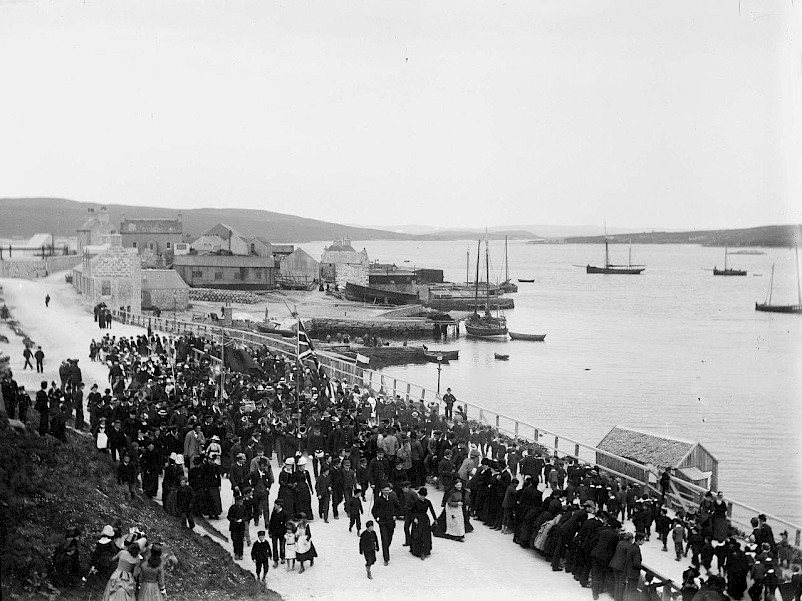
It was almost eighty years before another Jubilee came about, and this was probably the biggest of them all, Thomas Manson observing that “the utmost enthusiasm prevailed”. Decoration was a big part of it, with flags and bunting on the Anderson Educational Institute, the Widows’ Asylum, the Tolbooth, the Grand Hotel, and in the new town “almost every house had something to mark the joyous character of the day”. Outside the town, “the brown hills of Gremista were lightened up with the colours displayed round the farmhouse”. This was the era when Shetlanders got involved in ceremonies, and there were lots of those on Jubilee day itself in the town, with a Lerwick Brass Band performance, the inauguration of the Town Hall bells, and a procession of officials and public around town that gathered at the Market Cross for speeches and toasts. They weren’t done yet, for there was an evening function at the Town Hall, then a bonfire at Gremista at night. A poem by someone with the pen-name “Matho” summarised the proceedings in The Jubilee day in Lerwick;
Town Hall service,
Sing and pray,
Pull the string,
The clock’s away.
Large procession
Round the town,
Satin hats,
Official gown.
Night wears on,
And so do we,
So ends the day
Of Jubilee.
There was a procession of 800 youngsters to Bellevue Park, where there was “a plentiful supply of milk and other good things in readiness” plus games, a great picnic, and cheers for the Queen. Scalloway’s Jubilee celebrations were part of regatta day, embellished by a parade and the opening of a public water pump where the Rev. Bayne stated that “while the Lerwick people on this Jubilee Day were regaling their ears with the music of bells, those of Scalloway were pleasing their palates with pure water”. Meanwhile, in Unst, a large group went over to Balta for a picnic, then sailed round the island “with banners streaming”, and at Haroldswick the school pupils were treated - if that’s the right word - to addresses by clergymen and others on improvements on behalf of the young during the Queen’s reign, then votes of thanks before each child. The newspaper noted “the children were extremely tidy and well-behaved”.
A new aspect, repeated for the next two Jubilees, was a subscription for worthy causes, with money collected for comforts to the poor. In contrast (this must have rankled with many), a Women’s Jubilee Offering was raised for the Queen which raised the equivalent of £9,000 today. A dissenting voice on record was the poet Haldane Burgess. His Jubilee Ode described the half-century of toil of a Shetlander up to Jubilee year, and the narrator’s disillusionment with the Queen as he, and she, aged;
Fifty hairsts I’m gaddered in da coarn, -
Sic laek as wis, - an hirdit mi sma crop;
Fifty years peyd mi rent, an grudged it.
O less-a-less! What is du düne troo aa da
Lang half-centiry o time
‘At du’s been Wheen? I kno no what.
An dan, -
Ach! Dis be blow’d
For a Jubilee Ode.
1897 Diamond Jubilee
Ten years later, the format was similar, albeit without such municipal bombast in Lerwick. The main event in town co-opted an initiative that was happening anyway – the opening of the Gilbertson Park. Prosperous Shetland businessman Robert Gilbertson donated land for a public park on the outskirts of Lerwick, and this was opened with elaborate ceremony on Jubilee day.
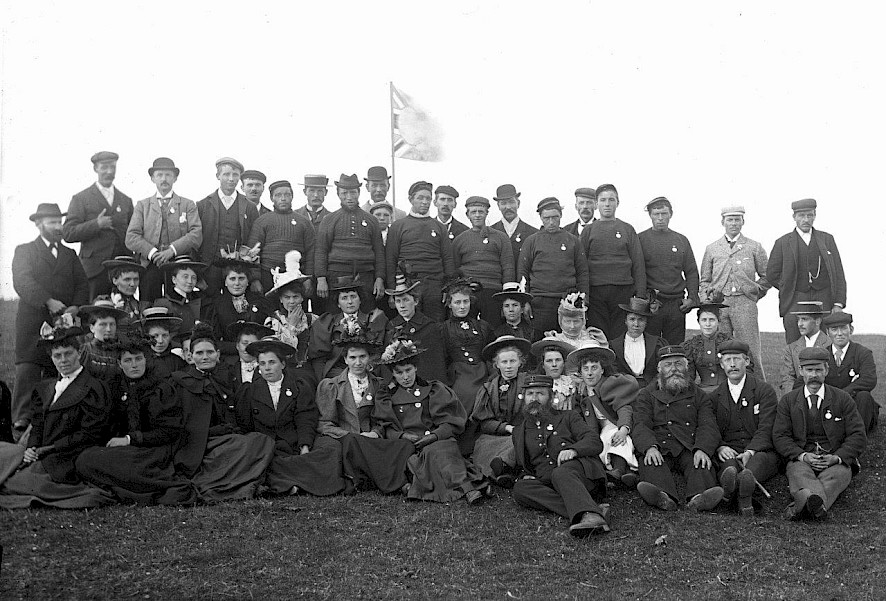
Throughout Shetland there were picnics, bonfires, and fundraising - this time for the Jubilee Nurses’ Fund. Hay Shennan, the islands’ Sheriff, declared that “the town was remarkably free from animosities, and there was the most friendly feeling between the various religious denominations”, but further afield there was someone who wasn’t taken with things. In Yell, Laurence Williamson wasn’t impressed, for doctrinal reasons, and wrote to his sister May: “I was at none of the Jubilee work, for I do not think it right of a Shetlander to join in it save as a spectator, for Shetland was subjected to Scotland against its will & I don’t care a straw for the Queen nor for kings & lords. The south folk are crazy about it.”
1935 Silver Jubilee
Society had changed by George V’s Jubilee, and local officialdom joined with the usual players to make the day an especially memorable one for the bairns. 800 children were treated to a programme of films at the North Star Cinema, then each got “a bulky bag containing fancy cakes, Jubilee chocolate and fruit”. All the 3,000 Shetland pupils were given a medal that was the “most elegant ever produced for presentation to children in Shetland”. The design was by Tom Henry, Lerwick, and the medals especially struck. The old folk, in Lerwick at least, weren’t forgotten, and 200 of them got a gift of tea and coal.
One of Shetland’s biggest landlords, Robert Bruce, excelled. He paid for entertainments for scholars in Cunningsburgh, Sandwick, Dunrossness, and Fair Isle. “This generous action on the part of the proprietor to the children of his tenantry will be appreciated as much by the parents as by the children themselves” said the Shetland News. The British Legion organised the Jubilee ball at the Town Hall, where guests got to hear the King’s speech, relayed in the main hall at 8.00 p.m.
Special mention comes here to a Jubilee legacy that isn’t actually one! The parks at between St Olaf and King Harald Streets are often called the Jubilee Parks. However, the Lerwick Town Council only devised the scheme in 1938 that was suspended due to war, and resumed in 1947. It was a King George’s Field, part of nationwide memorial to the late monarch, funded by the National Playing Fields Association.
This article was first published in the Shetland Times. Part two will be published on Friday 3 June 2022.
